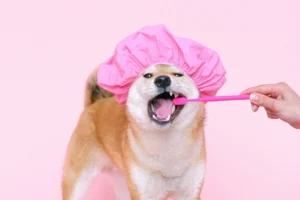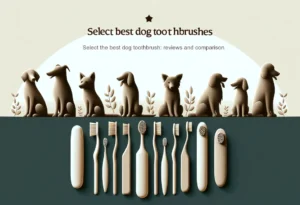Cats can be mysterious creatures, displaying a wide range of emotions and behaviors that leave us puzzled at times. One common puzzling behavior is when cats cry or become agitated when you try to brush them with a wet toothbrush. But fear not, there is a simple explanation for this seemingly odd reaction.
When you brush your cat with a wet toothbrush, the sensation of the wet bristles against their fur can mimic the feeling of being licked by another cat. This can trigger grooming behavior in your cat, causing them to become agitated or cry in an attempt to escape the sensation. Understanding why your cat reacts this way can help you find alternative grooming methods that are more comfortable for your furry friend.
Sensation of Wet Bristles
Have you ever wondered why your cat cries when you brush them with a wet toothbrush? Well, it all boils down to the sensation of wet bristles. When you brush your furry friend with a wet toothbrush, the feeling can mimic being licked by another cat. This triggers a grooming response in your cat’s brain, prompting them to try and groom themselves. In the wild, cats groom each other as a form of social bonding and to maintain cleanliness. So, when your cat feels the wet bristles, it instinctively reacts as if it’s being groomed by another feline.
Mimicking Grooming Behavior
The crying or agitation you may notice in your cat when using a wet toothbrush is a natural response to mimic grooming behavior. Cats are meticulous groomers, spending a large portion of their day cleaning their fur. So, when they feel the wet bristles of a toothbrush, they may interpret it as another cat trying to groom them. This can lead to confusion and discomfort, causing your cat to cry or become agitated.
Adding to this insight, cats also have sensitive skin, and the sensation of wet bristles can be uncomfortable or even painful for them. So, it’s essential to be gentle and observant when brushing your cat with a toothbrush, ensuring they are comfortable throughout the grooming process. Proper grooming tools and techniques can make a world of difference in keeping your cat happy and healthy.
Alternative Grooming Methods
Brushing your cat with a wet toothbrush can be distressing for them, causing them to cry due to discomfort or fear of the unfamiliar sensation. To avoid this, consider using a soft-bristled brush or grooming glove instead. These tools are gentler on your cat’s skin and can help them feel more at ease during grooming sessions. Additionally, you can try using a dry toothbrush or a damp cloth to mimic the sensation of grooming without the use of water. Remember to go slow and be patient with your cat to help them adjust to the grooming process without causing them distress.
Behavioral Triggers
Crying when brushed with a wet toothbrush may not only be due to the physical sensation but also to other behavioral triggers in cats. Stress, anxiety, or even past negative experiences with grooming can cause your cat to react negatively during brushing. To help alleviate these triggers, create a calm and comfortable grooming environment for your cat. Use positive reinforcement, treats, and soothing words to associate grooming with positive experiences. Additionally, try to groom your cat when they are relaxed, such as after a meal or a play session, to reduce their anxiety levels and make the grooming process more enjoyable for them.
- Provide a calming environment for grooming
- Use positive reinforcement and treats to make grooming a positive experience
- Ensure your cat is relaxed before starting a grooming session
- Be patient and gentle with your cat during grooming sessions
Remember, understanding and addressing your cat’s specific needs and triggers can help make grooming a more pleasant experience for both you and your feline friend.
Understanding Cat Communication
Curious why your cat cries when you brush them with a wet toothbrush? Cats communicate through various cues, including vocalizations like meowing and crying. When your cat cries during grooming, it may signal discomfort or stress. Pay attention to their body language – flattened ears, twitching tail, or tense posture could indicate they’re not enjoying the experience. Understanding these cues is crucial for a harmonious grooming routine.
Creating a Positive Grooming Experience
To make grooming a positive experience for your cat, focus on building trust. Start slow, offering treats and gentle strokes before introducing the wet toothbrush. Use a soft bristle brush and speak soothingly to reassure your cat. Always end on a positive note, with a treat or favorite activity. Remember, patience is key when establishing a grooming routine that your cat will enjoy.
Tips for a Positive Grooming Experience: 1. Start grooming sessions when your cat is relaxed. 2. Use a wet toothbrush with soft bristles for gentle grooming. 3. Offer treats and praise throughout the grooming process. 4. Keep grooming sessions short and positive. 5. End each session with a reward, like a favorite treat or playtime.
For more in-depth tips on creating a positive grooming experience, consider consulting a professional groomer or veterinarian for tailored advice.
Handling Agitation During Grooming
Grooming your cat with a wet toothbrush can sometimes lead to agitation or crying. To handle this, start by creating a calm environment. Speak softly to reassure your cat and use gentle, slow strokes during brushing. If your cat becomes agitated, take a break and try again later. Additionally, praise and reward your cat with treats after each grooming session to associate the experience with positivity. Remember, patience is key when grooming your furry friend, so take your time and be gentle.
Importance of Regular Grooming
Regular grooming is essential for your cat’s overall health and well-being. Brushing helps prevent matting, reduces shedding, and promotes good skin and coat health. It can also strengthen the bond between you and your feline companion. By grooming your cat regularly, you can detect any underlying health issues early on, such as skin irritations or lumps. Make grooming sessions a part of your routine to keep your cat looking and feeling their best.
Additional Unique Insight:
– Regular grooming also helps stimulate blood circulation and distribute natural oils throughout your cat’s coat, giving them a healthy and shiny appearance.
Remember, a happy cat equals a happy owner, so make grooming sessions a positive and enjoyable experience for both you and your feline friend.
Alex, a passionate animal lover, has experience in training and understanding animal behavior. As a proud pet parent to two dogs and three cats, he founded AnimalReport.net to share insights from animal experts and expand his knowledge of the animal kingdom.









